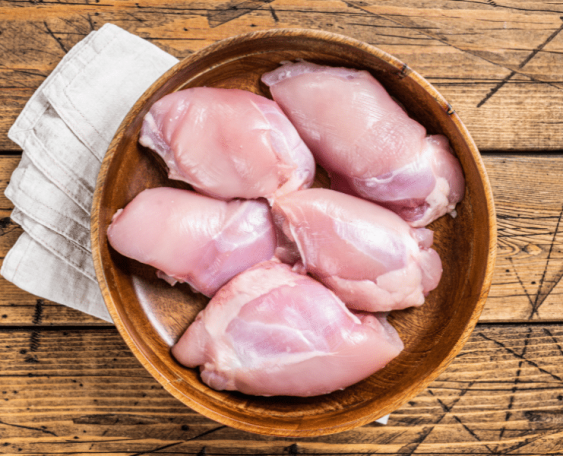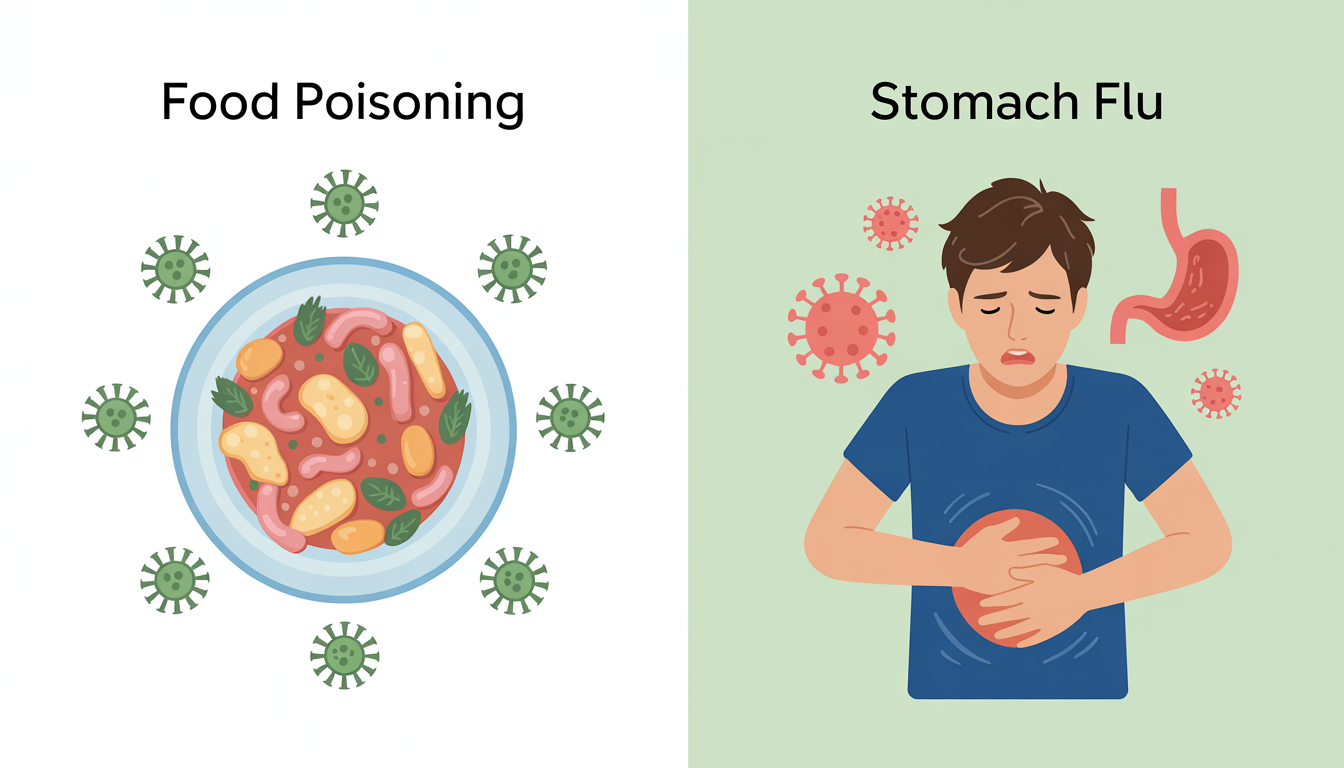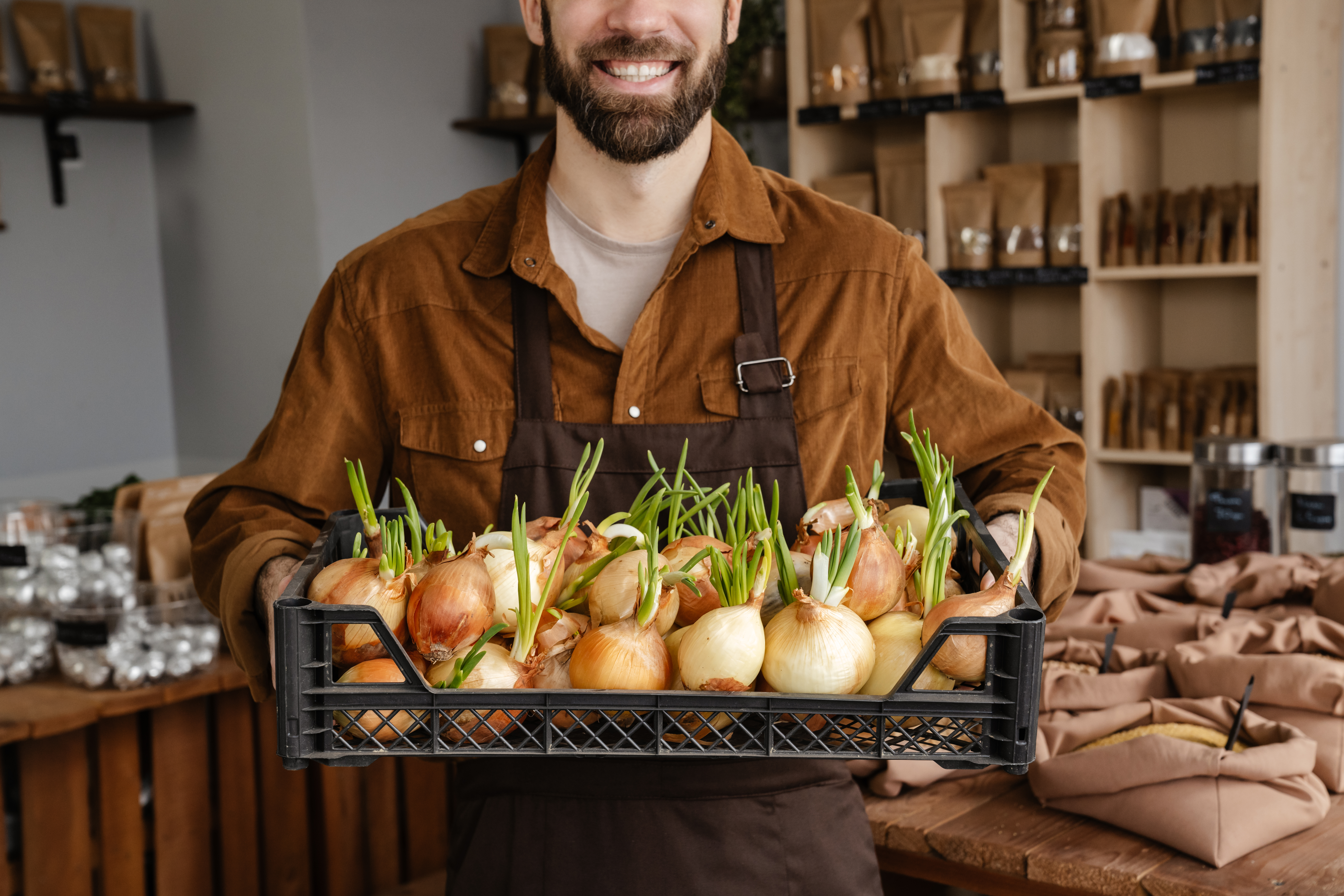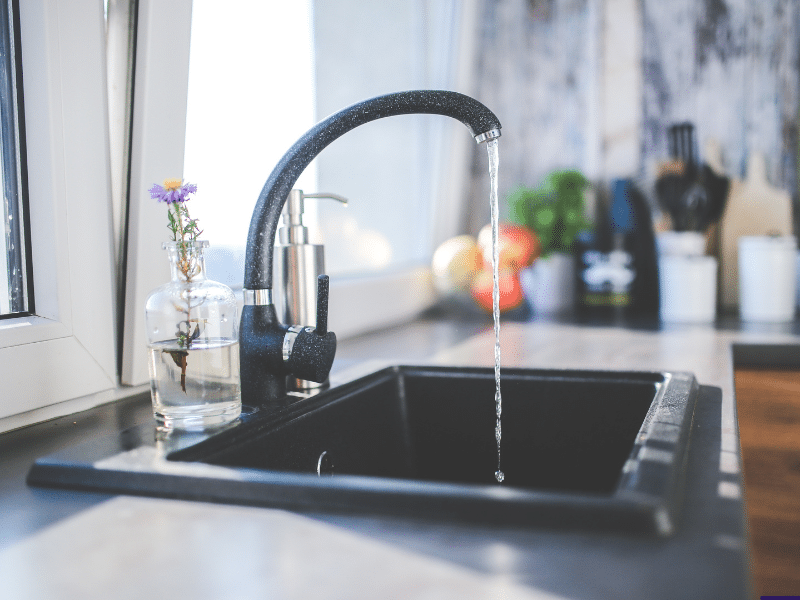Why Is It Harmful When Chicken Sits Out Too Long?
Bacteria can flourish in a wide range of temperatures. Again, temperatures between 40-140 °F provide an ideal environment for bacteria to proliferate. The longer chicken sits out in this temperature range, the more the bacteria can reproduce, increasing the risk of foodborne illnesses. Given the right conditions, bacteria populations reproduce extremely rapidly, doubling in as little as 20 minutes.
When considering how long chicken can sit out, always err on the side of caution. The less time chicken sits out of the refrigerator, the better. Pay attention in situations where chicken may cross into the danger zone, including while transporting it home from the store, leaving it in the car while running other errands, or letting it sit on the kitchen counter to thaw.
The most common types of bacteria that grow on chicken include:
- E. coli – Food contaminated with dangerous strains of E. coli may cause severe diarrhea and other potentially life-threatening illnesses. A common cause of E. coli contamination is improper food-handling practices at stores, restaurants, farms, and factories.
- Salmonella – Salmonella contamination is one of the most common causes of food poisoning, and chicken happens to be one of the major sources. Astonishingly, about 1 in every 25 packages of chicken sold in grocery stores is contaminated with Salmonella. If you eat food that contains this bacteria, it can enter the lining of your intestines and make it hard for you to retain water. Severe dehydration, diarrhea, and sepsis are some of the symptoms that may result.
- Campylobacter – Although Campylobacter may not be as well known as E. coli and Salmonella, it is a dangerous type of bacteria that causes about 1.5 million reported cases in the U.S. yearly. It is commonly found in raw or undercooked chicken, as well as some dairy products, seafood, and untreated water.
What Happens If You Eat Bad Chicken?
If you eat spoiled chicken, you could become sick with food poisoning. Symptoms range from mild to severe. Severe food poisoning can even be fatal. Every year, 1 in 6 Americans contract a foodborne illness. More than 100,000 are hospitalized, while 3,000 die due to their illness.
Symptoms of food poisoning depend on the type of bacteria you ingest. They can last days, weeks, or months. In some cases, they lead to death. Common symptoms include:
- Nausea
- Vomiting
- Diarrhea
- Abdominal cramps or pain
- Fever
- Headache
- Muscle aches
- Fatigue
- Loss of appetite
Looking beyond mild cases, more serious conditions and illnesses that can be caused by contaminated chicken include kidney damage or failure, meningitis, arthritis, brain damage, and nerve damage.
Symptoms of food poisoning typically develop within a few hours to a few days after consuming contaminated chicken. In severe cases, symptoms may persist or worsen, leading to dehydration, bloody stools, or neurological symptoms. If you suspect you have food poisoning, it’s essential to stay hydrated and seek medical attention if symptoms are severe or persistent.
Check that meat reaches a safe internal temperature to eliminate bacteria that could cause foodborne illness.
How To Know When Chicken Has Gone Bad?
By paying attention to three sensory cues—smell, texture, and appearance—you can determine whether chicken has gone bad and ensure food safety.
Smell
Fresh chicken should have a mild, slightly salty smell, or no discernible odor at all. Spoiled chicken may emit an unpleasant, foul, or sour odor. It could smell rotten, putrid, or like ammonia. Mold growth on spoiled chicken can also give it a musty or moldy odor.
Texture
Fresh chicken should have a firm, slightly springy texture. Spoiled chicken may feel slimy or sticky to the touch, indicating bacterial growth. It can also feel mushy, spongy, or too soft, indicating decomposition. If it’s been stored for too long, it may also develop a stringy or fibrous texture.
Appearance
Fresh chicken typically has a pinkish or whitish color. Any discoloration, such as grayish or greenish hues, or dark spots and patches, may indicate bacterial growth. Mold growth on the surface is also a clear sign of spoilage. Swollen or bloated packaging may indicate bacterial growth inside.
What About Taste?
As a rule of thumb, you should never taste raw chicken. That said, fresh chicken should have a neutral taste or a slight savory flavor. Spoiled chicken may have a sour or metallic taste. It can taste rancid, bitter, or unpleasantly tangy. Spoiled chicken can sometimes have an odd texture when chewed.
Storing and Consuming Chicken: Best Practices for Raw and Cooked Chicken
To protect yourself and others from foodborne illnesses, follow these best practices for storing chicken.
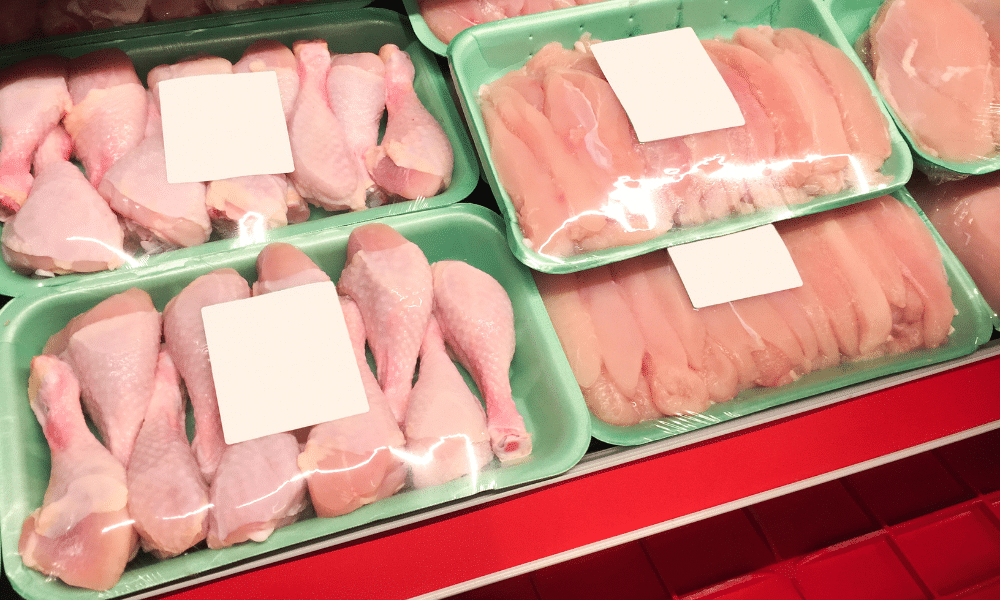
How Long Can Raw Chicken Sit Out?
Raw chicken should not sit out longer than one to two hours, depending on the air temperature. The less time it is left out, the safer it will be. When you get home from the store, immediately store your raw meats, like chicken or bacon, in the refrigerator. Cook it within one to two days, or freeze at 0 °F. Frozen chicken has a remarkably long shelf life. A whole chicken will keep for one year and cut chicken will keep for nine months if left in the freezer.
How Long Can Cooked Chicken Sit Out?
Cooked chicken should not sit out long either. Put cooked chicken in the refrigerator or freezer within two hours, or one hour if the room temperature is over 90 °F. If properly wrapped, it will keep in the refrigerator for three to four days and between two to six months in the freezer.
If cooked chicken sits out longer than two hours, like at a buffet, it will be safe to eat so long as it is kept out of the danger zone. In other words, it should be kept near a heat source that will maintain its internal temperature continuously above 140 °F.
Although one study found that Salmonella in antibiotic-free and organic chicken was less resistant to antibiotics than in conventionally raised chickens, there seems to be no discernable difference in the levels of Salmonella found in free-range organic poultry and those raised conventionally.
Though it may seem counterintuitive, avoid washing your chicken. Doing so can spread bacteria around your kitchen sink, counter, and equipment. Always use a separate cutting board for preparing raw chicken. Don’t let raw chicken touch other food, thoroughly clean the surfaces you prepare it on, and cook it until a food thermometer shows it has an internal temperature of at least 165 °F.
Can I Reheat Chicken in the Microwave if It’s Been Out Longer Than Two Hours?
If your chicken has been sitting out for more than two hours, reheating it in the microwave won’t necessarily make it safe to eat. Food may cook unevenly in microwaves, especially when it is irregular in shape or thickness like most cuts of chicken. Chicken reheated in a microwave can have internal cold spots where bacteria will not be destroyed.
Does Covering Chicken Help Prevent It From Spoiling?
Bacteria are often already present in chicken when you purchase it. Therefore, covering chicken won’t prevent it from spoiling. A small amount of bacteria can quickly multiply if you let the chicken sit out too long, even if it has been sealed.
Keep Food Safe Can Answer Your Questions
If you become ill after eating improperly handled chicken, you may be able to bring legal action against the individuals and entities that put you in danger. Your case can also help bring awareness to the importance of food safety. When the parties responsible for making people sick are held accountable, everyone is better off.
Do not wait to consult with an attorney if you suspect you contracted food poisoning from chicken at little to no fault of your own. Keep Food Safe can connect you with an experienced food poisoning lawyer who will explain your legal options for recovering compensation. Contact us to learn more.

